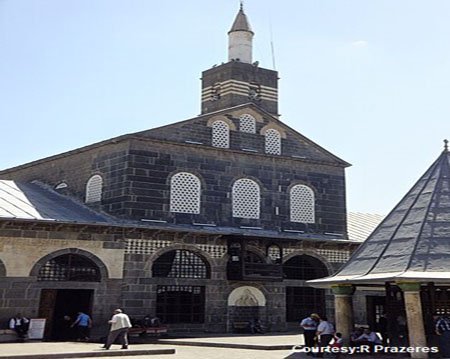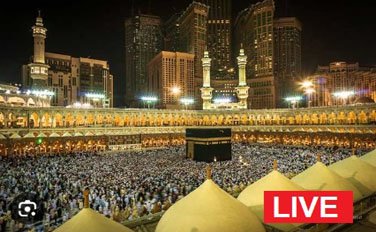Unveiling Turkey's Historical Gems: Mosques and Beyond
Turkey boasts a rich tapestry of history, evident in its numerous historical landmarks. From awe-inspiring mosques to ancient ruins, here’s a list of some must-see historical places in Turkey, along with some of the most significant historical mosques:
Hagia Sophia: Unveiling a Monument Steeped in History and Faith
Hagia Sophia, a captivating landmark in Istanbul, transcends the realm of architecture. It’s a testament to human ingenuity, a stage for historical drama, and a place of profound spiritual significance. Here’s a comprehensive look at Hagia Sophia, weaving together its history, potential miracles, and the conversations it evokes:

A Journey Through Time:
4th Century Marvel (360 AD): Hagia Sophia’s story begins under the reign of Byzantine emperor Constantius II. Dedicated as a church in 360 AD, it became the heart of the Eastern Orthodox Church for nearly a millennium. Imagine the grandeur of this early marvel, though a fire in 532 AD necessitated a rebuild.
Justinian’s Masterpiece (537 AD): Emperor Justinian I undertook a massive reconstruction project, culminating in the Hagia Sophia we know today. Completed in 537 AD, its innovative design, featuring a massive dome, revolutionized Byzantine architecture.
Echoes of Conquest (1453): The Ottoman conquest of Constantinople in 1453 marked a turning point. Hagia Sophia was converted into a mosque, with minarets added and Christian mosaics partially obscured with Islamic calligraphy. This event sparked conversations about religious tolerance and the preservation of historical sites.
A Museum for All (1931): In 1931, the Turkish Republic’s founder, Mustafa Kemal Atatürk, transformed Hagia Sophia into a museum. This decision aimed to showcase the monument’s cultural and historical significance for all visitors, transcending religious affiliations.
Conversations that Linger:
Divine Intervention or Architectural Prowess? Legends surround Hagia Sophia’s construction. Some tales speak of miraculous interventions during its building. However, historians credit the brilliant Byzantine architects like Isidore of Miletus and Anthemius of Tralles for its groundbreaking design.
A Place of Prayer and Reflection: While no documented miracles are associated with Hagia Sophia, its enduring place of worship for centuries speaks volumes about the spiritual connection people feel within its walls. Whether whispering prayers as a Christian or performing Salah (Islamic prayer) as a Muslim, the Hagia Sophia has fostered a sense of communion with the divine for countless individuals.
A Legacy that Endures:
Hagia Sophia’s enduring legacy lies in its ability to spark conversations across cultures and religions. It’s a powerful symbol of human achievement, religious devotion, and the intricate tapestry of history.
Conclusion:
Whether you marvel at its architectural brilliance, contemplate its historical significance, or simply find solace within its walls, Hagia Sophia offers a unique experience. It’s a place that compels you to think, to feel, and to appreciate the enduring power of human creation.
Topkapi Palace: A Grand Stage of Ottoman Opulence

Towering over Istanbul’s historic peninsula, the Topkapi Palace isn’t just a magnificent structure; it’s a portal to a bygone era. Here, we delve into the detailed story of this Ottoman marvel, its rich history, and the captivating conversations it evokes.
A Saga in Stone (1465 – 1853):
1465: The Grand Design Begins: Commissioned by Mehmed the Conqueror following the conquest of Constantinople, the Topkapi Palace’s construction commenced in 1465. Imagine the bustling scene as skilled artisans brought the vision to life.
An Expanding Empire, An Expanding Palace (16th – 17th Centuries): As the Ottoman Empire flourished under Suleiman the Magnificent and his successors, the palace complex grew. New sections like the Harem and the Treasury were added, reflecting the empire’s opulence.
A Glimpse into Courtly Life: Picture the grandeur! Envision lavish ceremonies, intricate court politics, and the daily lives of sultans, concubines, and officials within the palace walls.
The Sands of Time Shift (19th Century): With the decline of the Ottoman Empire, the Topkapi Palace gradually lost its political significance. In 1853, the Dolmabahçe Palace on the Bosphorus became the new administrative center.
Conversations Through the Centuries:
Echoes of Power: The very stones whisper tales of sultans who wielded immense power, shaping the course of history. Imagine conversations about military campaigns, alliances, and the intricacies of ruling a vast empire.
A Haven for Luxury: Beyond the halls of power, the Topkapi housed a world of exquisite treasures. Spark conversations about the craftsmanship of Ottoman artisans, the opulence of the Imperial kitchens, and the fabled jewels adorning the sultans’ wives.
A Bridge Between East and West: The palace’s architecture and art collections blended Ottoman traditions with European influences. Consider conversations about the cultural exchange that flourished during the Ottoman era.
A Legacy for All:
Today, the Topkapi Palace stands as a UNESCO World Heritage Site, a museum that invites visitors to explore the heart of the Ottoman Empire.
Conclusion:
Step through the magnificent gates of the Topkapi Palace and embark on a journey through time. It’s a place that ignites the imagination, fostering conversations about power, artistry, and the enduring legacy of a once-mighty empire.
Sultan Ahmed Mosque (Blue Mosque): A Dazzling Beacon of Ottoman Splendor
Towering over Istanbul’s historic skyline, the Sultan Ahmed Mosque, also known as the Blue Mosque, is more than just a place of worship. It’s a captivating architectural masterpiece, a vibrant center of faith, and a testament to Ottoman grandeur.
A Monument Born from Ambition (1609 – 1617):
1609: A Sultan’s Vision: Following a military campaign, Sultan Ahmed I, at the young age of 19, embarked on an ambitious project – the construction of a grand mosque to rival the Hagia Sophia. Imagine the bustling scene as skilled architects and artisans brought the Sultan’s vision to life.

Architectural Innovation: Designed by Mimar Sinan’s star pupil, Sedefkar Mehmed Aga, the mosque incorporated classical Ottoman elements with innovative features. Spark conversations about the mosque’s unique design, including its six minarets (a point of contention at the time) and the cascading domes.
A Tapestry of Tiles: The mosque’s moniker, “Blue Mosque,” originates from the mesmerizing Iznik tiles adorning its interior walls. Imagine the dazzling effect of these cobalt, turquoise, and emerald tiles, creating a celestial atmosphere.
Conversations Echoing Within the Walls:
A Center of Community: Beyond its stunning aesthetics, the Blue Mosque serves as a vital center for Istanbul’s Muslim community. Consider conversations about the daily prayers, religious ceremonies, and the sense of peace and solace it offers worshippers.
A Bridge Between Cultures: The mosque’s architectural influences reflect the blend of cultures within the Ottoman Empire. Spark conversations about the harmonious merging of Islamic traditions with Byzantine and European elements.
A Spark of Controversy: The construction of the Blue Mosque with six minarets, typically reserved for the mosque in Mecca, caused some controversy at the time. Consider including this historical anecdote to pique user interest.
A Legacy of Enduring Beauty:
The Sultan Ahmed Mosque stands as a dazzling symbol of Ottoman architectural prowess and artistic achievement. It’s a place that fosters conversations about faith, history, and the enduring power of beauty.
Conclusion:
Step within the majestic walls of the Blue Mosque and be captivated by its architectural brilliance. Immerse yourself in the spiritual atmosphere, appreciate the artistic details, and experience a landmark that embodies the grandeur of the Ottoman era.
Suleymaniye Mosque: A Crown Jewel of Ottoman Architecture
Soaring majestically above Istanbul’s Golden Horn, the Suleymaniye Mosque isn’t just a place of worship; it’s a testament to Ottoman architectural genius.
A Legacy Etched in Stone (1550 – 1557):
1550: The Grand Design Takes Shape: Commissioned by Suleiman the Magnificent, one of the most powerful Ottoman sultans, construction began in 1550. Imagine the vast resources and skilled workforce assembled to realize this architectural marvel.

Mimar Sinan’s Masterpiece: The mosque was designed by the legendary architect Mimar Sinan, who redefined Ottoman mosque architecture. Spark conversations about Sinan’s brilliance, his innovative use of space and light, and the harmonious proportions of the mosque’s design.
A Monument to Power and Piety: The Suleymaniye Mosque embodied both the political and religious might of the Ottoman Empire. Consider conversations about the mosque’s role as a symbol of Suleiman’s reign and its significance for the Muslim community.
Conversations Amongst the Minarets:
A Center of Learning: The mosque complex incorporated a madrasa (Islamic school), a hospital, and a caravanserai (inn), reflecting the holistic approach to community development during the Ottoman era. Imagine the scholars pursuing knowledge, the sick seeking healing, and travelers finding rest within the mosque’s precinct.
A Beacon of Harmony: The mosque’s design integrates classical Ottoman elements with influences from Byzantine architecture. Consider conversations about the harmonious blend of styles, reflecting the cultural diversity within the empire.
An Enduring Legacy: Despite centuries of wear and tear, the Suleymaniye Mosque continues to inspire awe. Spark conversations about its enduring beauty, its role as a landmark, and its significance for understanding Ottoman history and architecture.
A Conclusion Steeped in Grandeur:
The Suleymaniye Mosque stands as a testament to the artistic vision of Mimar Sinan and the grandeur of the Ottoman Empire. It’s a place that fosters conversations about artistry, faith, and the enduring power of human achievement.
Selimiye Mosque: A Crown Jewel of Ottoman Architecture

The Selimiye Mosque in Edirne, Turkey, stands as a testament to the artistic and engineering brilliance of the Ottoman Empire. Commissioned by Sultan Selim II and constructed between 1568 and 1575, the mosque is widely regarded as the magnum opus of the renowned architect Mimar Sinan.
A Legacy Built in Stone
Sultan Selim II, eager to leave his mark on the empire, entrusted Sinan with the creation of a grand mosque that would surpass all others. Sinan, already a master architect with a string of awe-inspiring structures to his name, poured his heart and soul into the project. He meticulously planned the mosque’s design, incorporating innovative techniques and pushing the boundaries of architectural possibility.
Architectural Marvel
The Selimiye Mosque is a masterpiece of Ottoman architecture, seamlessly blending Islamic traditions with classical influences. The mosque’s most striking feature is its majestic dome, a soaring structure that dominates the Edirne skyline. With a diameter of 31.25 meters (102.5 ft) and a height of 43.28 meters (142 ft), the dome dwarfs even the Hagia Sophia in Istanbul.
Sinan’s genius is evident in the way he achieved such a vast interior space. He employed four slender minarets, each pencil-thin and reaching a height of 70.89 meters (232.5 ft), to create a sense of verticality that complements the dome’s grandeur. The minarets are not merely decorative elements; their weight distribution helps to support the massive dome, eliminating the need for thick pillars that could obstruct the view from within the prayer hall.
A Social Complex
The Selimiye Mosque was not just a place of worship; it was a social complex that served the needs of the Edirne community. The mosque complex, known as a külliye, included a soup kitchen, a hospital, a caravanserai (a roadside inn), and a madrasa (an Islamic theological school). These institutions reflected the Ottoman concept of social responsibility and ensured that the mosque served as a central hub for the city’s well-being.
A UNESCO World Heritage Site
In recognition of its exceptional architectural value and historical significance, the Selimiye Mosque and its social complex were inscribed on the UNESCO World Heritage List in 2011. The mosque continues to be a place of pilgrimage for Muslims worldwide and a major tourist attraction, drawing visitors from across the globe to marvel at its architectural splendor.
Conclusion
The Selimiye Mosque stands as a lasting testament to the artistic genius of Mimar Sinan and the architectural prowess of the Ottoman Empire. Its innovative design, breathtaking scale, and harmonious integration into the urban fabric of Edirne make it a jewel of Islamic art and a landmark of world architecture.
The Grand Mosque of Bursa: A Legacy of Early Ottoman Grandeur

In the heart of Bursa, Turkey’s first Ottoman capital, lies the Grand Mosque, also known as Ulu Cami. This historic mosque, a landmark of early Ottoman architecture, boasts a rich history dating back to the late 14th century.
A Victory, A Mosque
The Grand Mosque’s story begins with Sultan Bayezid I, also known as Yıldırım Bayezid (Lightning Bolt Bayezid), the fourth Ottoman ruler. Following his resounding victory at the Battle of Nicopolis in 1396, Bayezid I desired to commemorate his triumph with a grand structure. Legend has it that he initially planned to build 20 mosques throughout Bursa. However, upon the advice of his son-in-law Emir Sultan, a revered scholar, Bayezid I opted to construct a single, monumental mosque – the Grand Mosque.
A Testament to Innovation
Completed in 1399, the Grand Mosque marked a significant shift in Ottoman architecture. Designed by architect Ali Neccar, the mosque incorporated elements of Seljuk Turkish architecture, the prevailing style at the time, while laying the groundwork for the development of a distinct Ottoman aesthetic.
The mosque’s most striking feature is its vast central hall, covered by a staggering 20 domes – a symbolic nod to Bayezid I’s original plan. Supported by massive pillars and arches, the domes create a sense of spaciousness and grandeur within the prayer hall.
A Place of Worship and Community
Beyond its architectural significance, the Grand Mosque served as a vital center for the Bursa community. The mosque complex encompassed a fountain for ablutions, a madrasa (Islamic school), and kitchens for distributing food to the needy. This focus on social welfare reflected the Ottoman concept of a külliye, a mosque complex that catered to the religious and social needs of the population.
Endurance Through the Ages
Over the centuries, the Grand Mosque has undergone several restorations due to earthquakes and general wear. Despite these challenges, the mosque has remained a cornerstone of Bursa’s religious and cultural life. Today, it continues to be a functioning mosque, welcoming worshippers and visitors alike.
A Beacon of History
The Grand Mosque of Bursa stands as a powerful symbol of the early Ottoman Empire’s architectural prowess and its commitment to faith and community. Its enduring legacy continues to inspire admiration and serves as a valuable link to the empire’s rich past.
Ulu Cami (Great Mosque) (Diyarbakır): A Witness to Anatolia's Evolving Faith

The Ulu Cami, also known as the Great Mosque, in Diyarbakır, Turkey, is a captivating testament to the city’s long and storied past. This architectural marvel boasts a rich history that stretches back centuries, reflecting the ever-changing religious landscape of Anatolia.
From Church to Mosque
The Ulu Cami’s origins remain shrouded in some mystery. According to some accounts, the mosque’s foundations were laid upon the remains of a Christian church dedicated to St. Thomas following the Muslim conquest of Diyarbakır in 639. The building may have initially served both Muslim and Christian communities, with designated areas for each faith. Over time, as Islam became more prominent in the region, the structure was fully converted into a mosque.
A Seljuk Masterpiece
The mosque’s current form, however, owes its grandeur to the Seljuk Turks who ruled the region in the 11th century. Sultan Malik-Shah I commissioned a major renovation and expansion of the existing structure around 1091. The Seljuk architects drew inspiration from the famed Umayyad Mosque in Damascus, resulting in a design that blended regional traditions with Islamic architectural principles.
Architectural Grandeur
The Ulu Cami’s most striking feature is its vast rectangular courtyard, a serene space flanked by two-story porticoes on the east and west. The prayer hall, located on the southern side of the courtyard, boasts a hypostyle design with rows of columns supporting a large central dome. The exterior walls of the mosque are constructed from local black basalt, creating a sense of strength and solidity.
A Place of Unity
Uniquely, the Ulu Cami caters to four different Islamic legal schools (Hanafi, Maliki, Shafi’i, and Hanbali). This reflects the mosque’s role as a unifying force within the Muslim community of Diyarbakır, transcending sectarian divisions.
A Legacy of Tolerance
The Ulu Cami’s enduring legacy lies in its embodiment of Anatolia’s rich religious tapestry. Standing tall for centuries, the mosque has witnessed the rise and fall of empires, the evolution of faiths, and the enduring spirit of its community. Today, it serves not only as a place of worship but also as a powerful symbol of tolerance and cultural exchange.
References: Own Research, Wikipedia.
Related Post: Beautiful and Ancient Mosques in Syria
Also Read: Exploring Egypt’s Mosques
May You Like: Al Quran with Urdu Translation mp3

